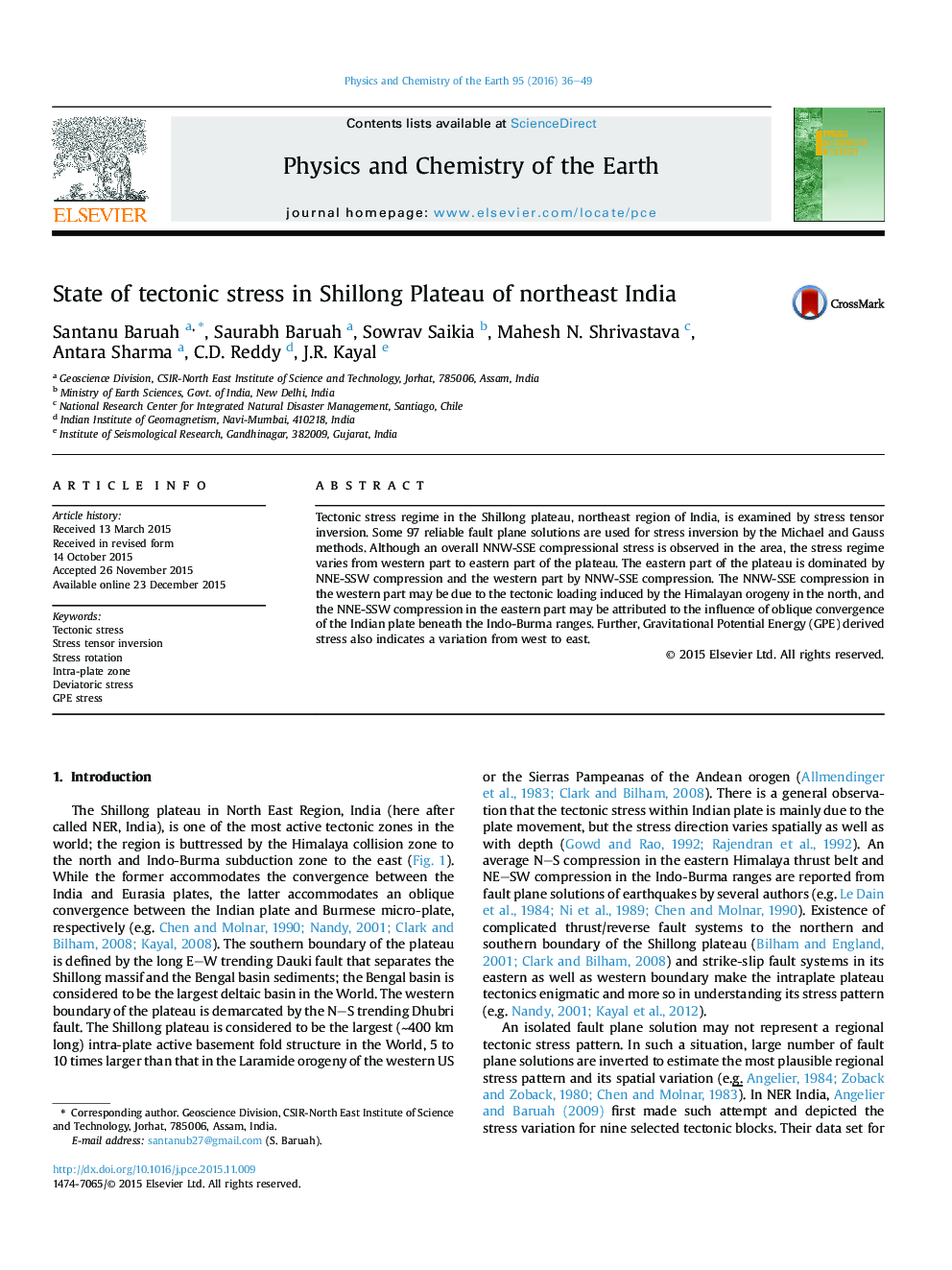| Article ID | Journal | Published Year | Pages | File Type |
|---|---|---|---|---|
| 4720787 | Physics and Chemistry of the Earth, Parts A/B/C | 2016 | 14 Pages |
•Tectonic stress regime of Shillong plateau is examined by stress tensor inversion.•The western & eastern part of the plateau has NNW & NNE compression respectively.•GPE derived stress are consistent with Stress Tensor Inversion for the plateau.•GPE stress varies due to topography and density heterogeneity of the plateau.•Tectonic loading, seismic and GPE stress govern the stress pattern of the plateau.
Tectonic stress regime in the Shillong plateau, northeast region of India, is examined by stress tensor inversion. Some 97 reliable fault plane solutions are used for stress inversion by the Michael and Gauss methods. Although an overall NNW-SSE compressional stress is observed in the area, the stress regime varies from western part to eastern part of the plateau. The eastern part of the plateau is dominated by NNE-SSW compression and the western part by NNW-SSE compression. The NNW-SSE compression in the western part may be due to the tectonic loading induced by the Himalayan orogeny in the north, and the NNE-SSW compression in the eastern part may be attributed to the influence of oblique convergence of the Indian plate beneath the Indo-Burma ranges. Further, Gravitational Potential Energy (GPE) derived stress also indicates a variation from west to east.
